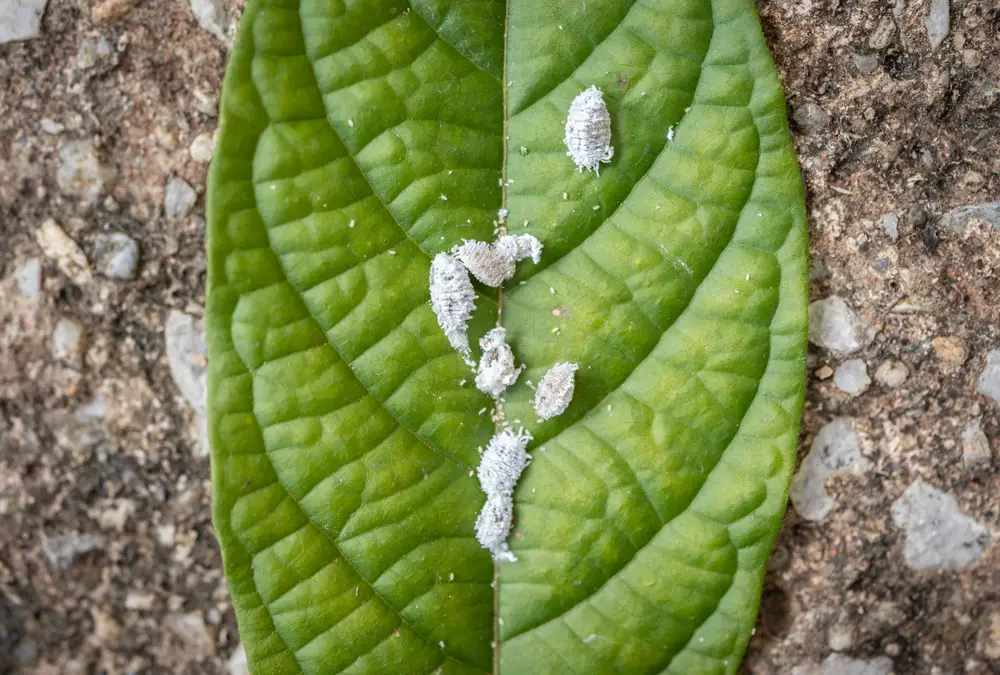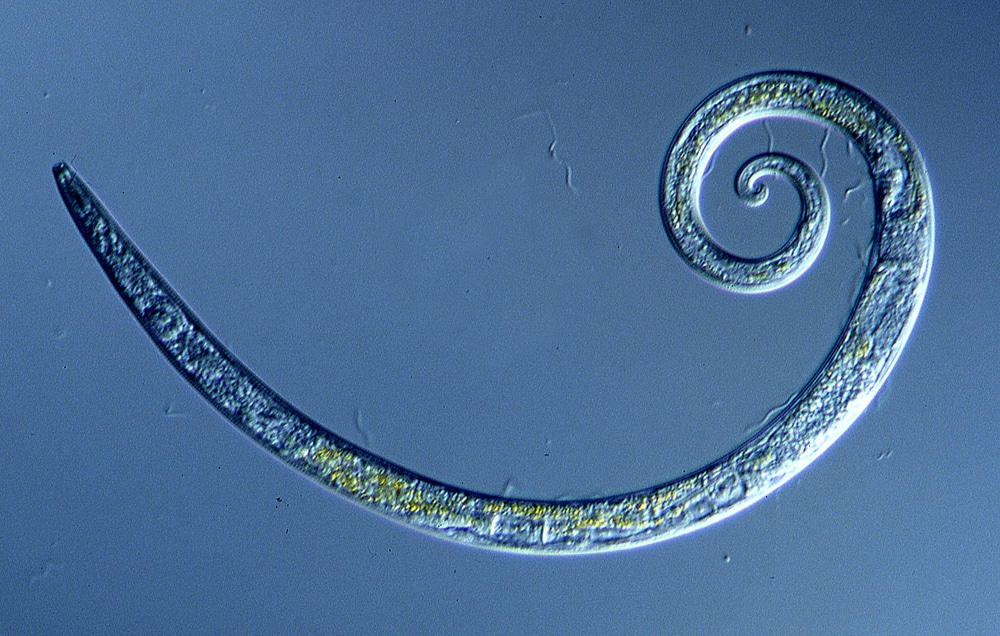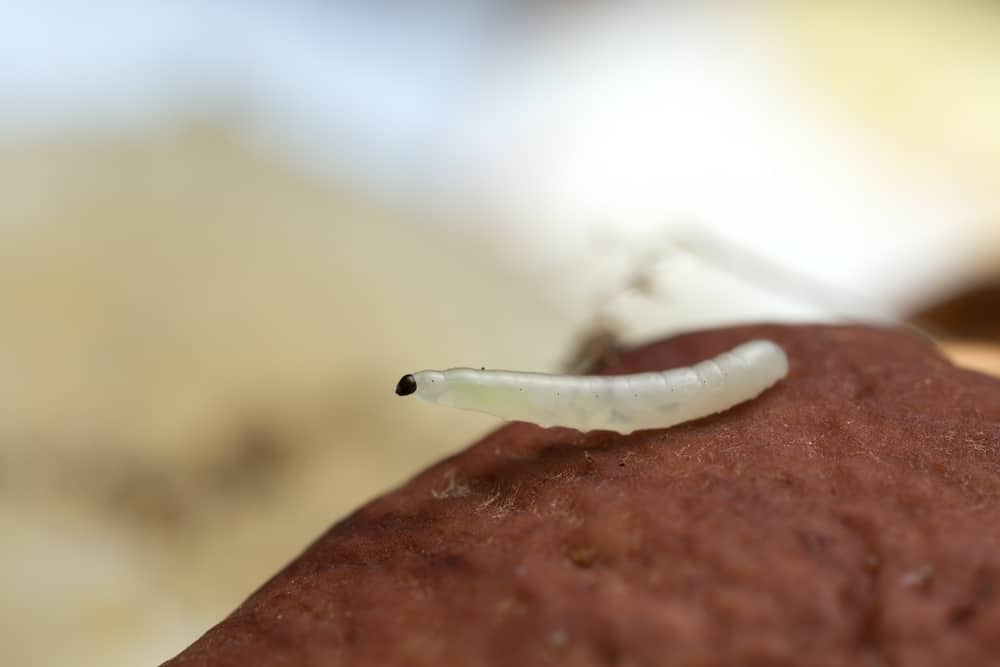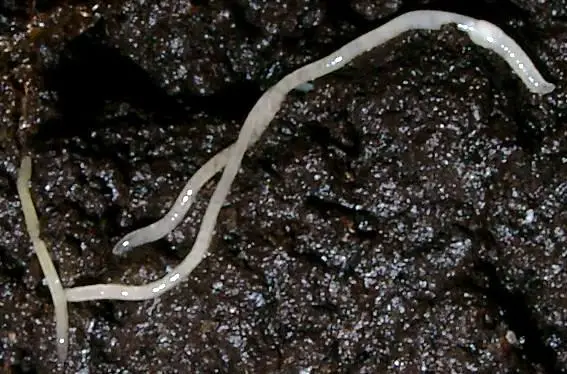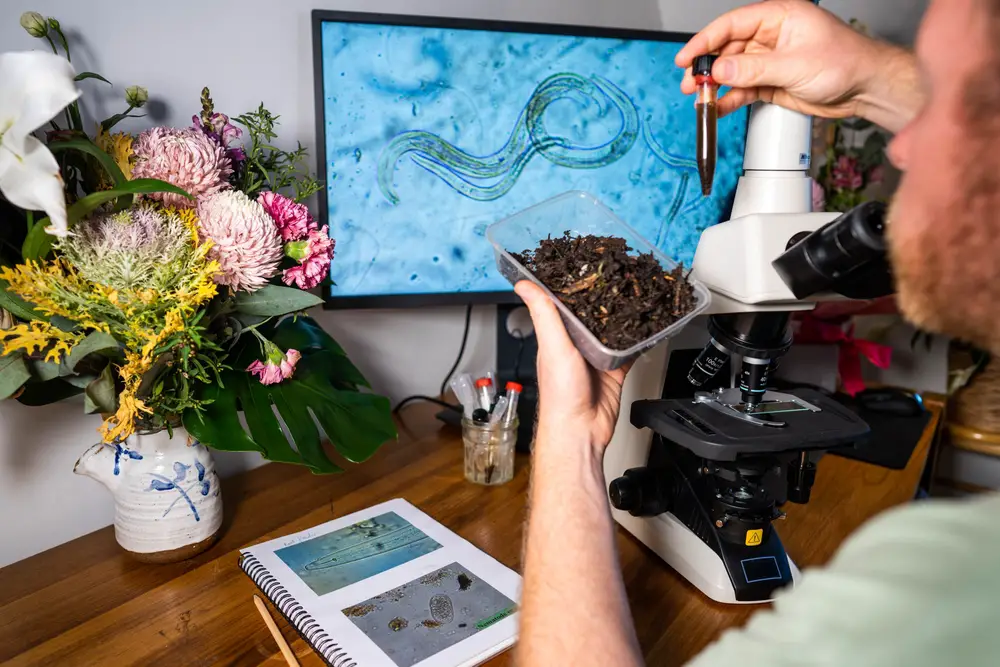Native to Japan, Popilla japonica – more commonly known as The Japanese Beetle – is of the chafer type (Scarabaeidae) and was unintentionally carried into North America in the early years of the 20th century.
Now considered an invasive destroyer of plant life, this pest has been recorded in dense populations in Europe within the last decade.
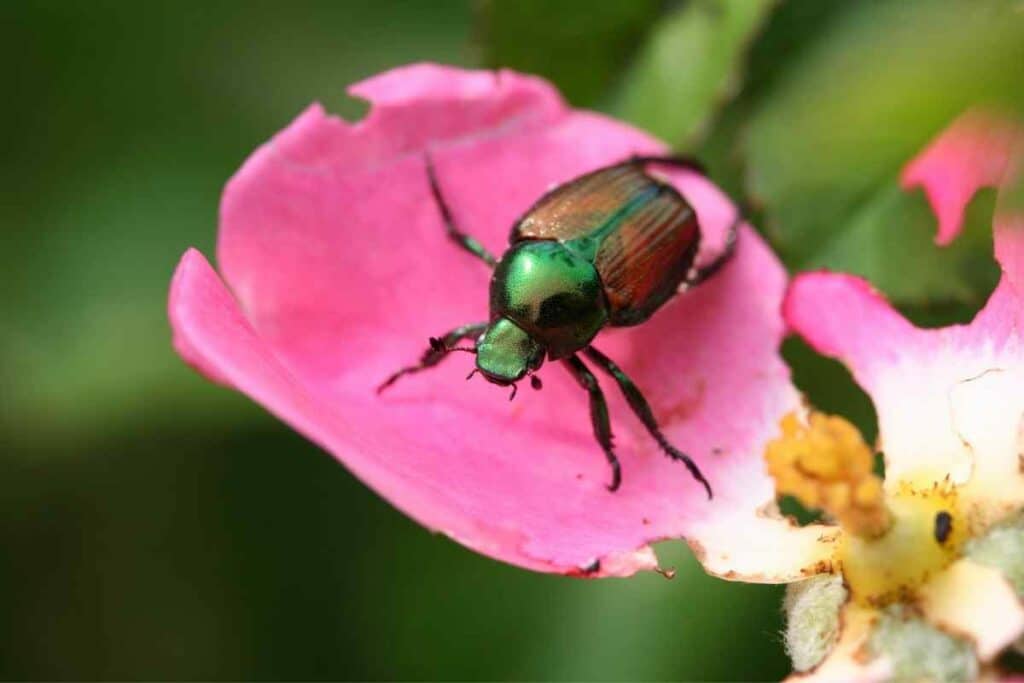
They pose such a significant threat to crops and other plant life that the UK government’s Department for Environment Food & Rural Affairs issued a warning about them, in recent years.
Their two-year life cycle apparently keeps populations at a controllable level, but they are incredibly polyphagous – meaning that they will devour many different species of plant and even devastate crops, when they arrive in large numbers.
In the USA alone, they exist in over 300 differing host plants.
Although they are very similar to other polyphagous beetles in the UK, they can easily be distinguished by their small dots, located along the edges of their abdomen, usually white in colour.
What Do They Look Like?
Adult beetles are brightly colourful, sporting a dark, metallic green body and wing cases which are in the region of the shades of bronze and copper.
White dots line the edges of its wing cases, allowing for easy identification amongst very similarly adorned species.
The most similar, according to some sources, is known as the Garden chafer (Phyllopertha horticola), which does not present with the same white dots.
As with species of arachnid, the female is usually larger and fiercer than the male but appear very much the same.
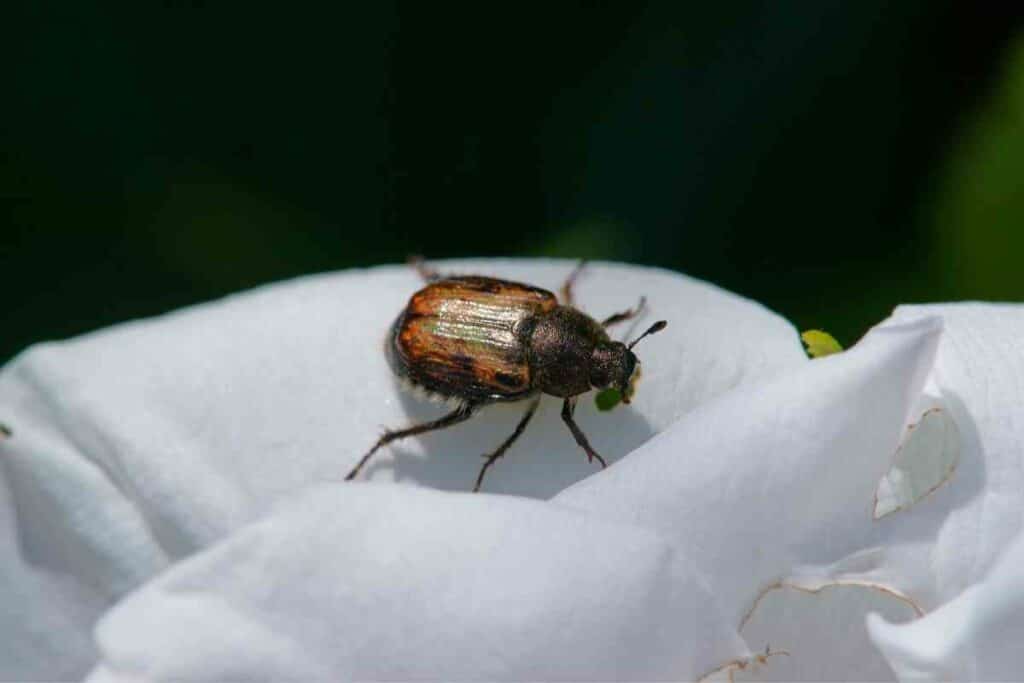
Their average size is in the region of 8-12mm in length; with a width of up to 7-8mm. Size does differ from source-to-source and some have been recorded as being up to 15mm by 10mm!
Eggs can be laid in multiple spherical shapes and sizes. Sometimes these are simply spherical, but they may even appear oval or even cylindrical.
They can be almost transparent, or they can appear an off-white colour; with a diameter of around 1.5mm.
Their surface also manifests a distinct, hexagonal pattern. Should you miss the eggs, their larvae are ‘C’ shaped and easily spotted.
They start out creamy white but eventually present the same metallic green as the adult. Solutions, thankfully apply to both their eggs and larvae.
Some can even be utilised in every stage of the bug’s life cycle.
Are They Really Harmful?
Whilst they are, generally, considered to be harmless to humans – aside from some reported allergic reactions – in every stage of their life cycle, these beetles are nothing less than devastatingly destructive to various species of plants.
So yes, they are very harmful and have the potential to be catastrophic.
In larger populations, almost all pests are inevitably harmful to plant life, but the Japanese beetle is particularly so: attacking plants from root to stem.
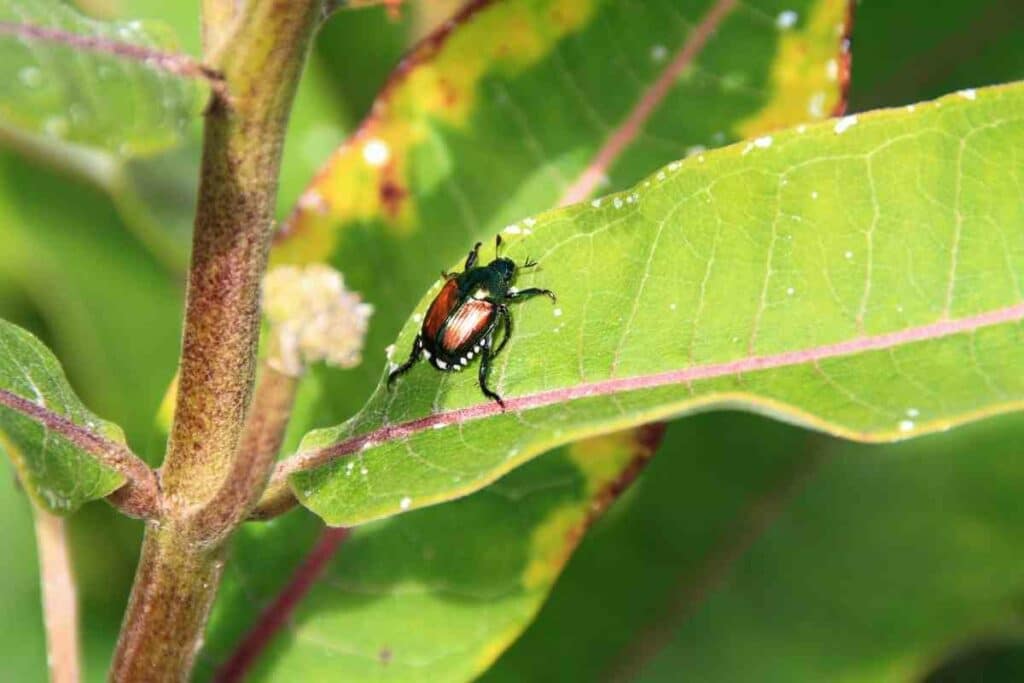
Even in their larvae form, they consume mass amounts of root and massacre plants covertly.
Before you have located the source of the problem, your turf is full of dead spots, or your plant is starved of nutrition and practically already dead.
Most notably affecting larger turfed areas, the larvae need to be tackled in a completely different way to the beetles themselves.
Adults consume any part of the main plant, from top to bottom: flowers, leaves, stems, and even various types of fruit in the later stages of ripening.
Being most active in the summer months, plants situated in sunlight are most attractive to these insects as they are active, mostly, in higher temperatures.
Did You Know? They feast in groups, chewing the leaf tissue surrounding the leaf’s veins. Leaves are ultimately skeletal once done with and the damage is unmistakable.
What Can Be Done to Deter Them?
With an abundance of organic deterrents, the use of harmful pesticides and soaps should always be a last resort.
There is no need for them, for example, if numbers are low.
Monotonous and laborious is it might be, these insects are rarely harmful to humans, so physically removing them by hand, or simply spraying with water are both viable options.
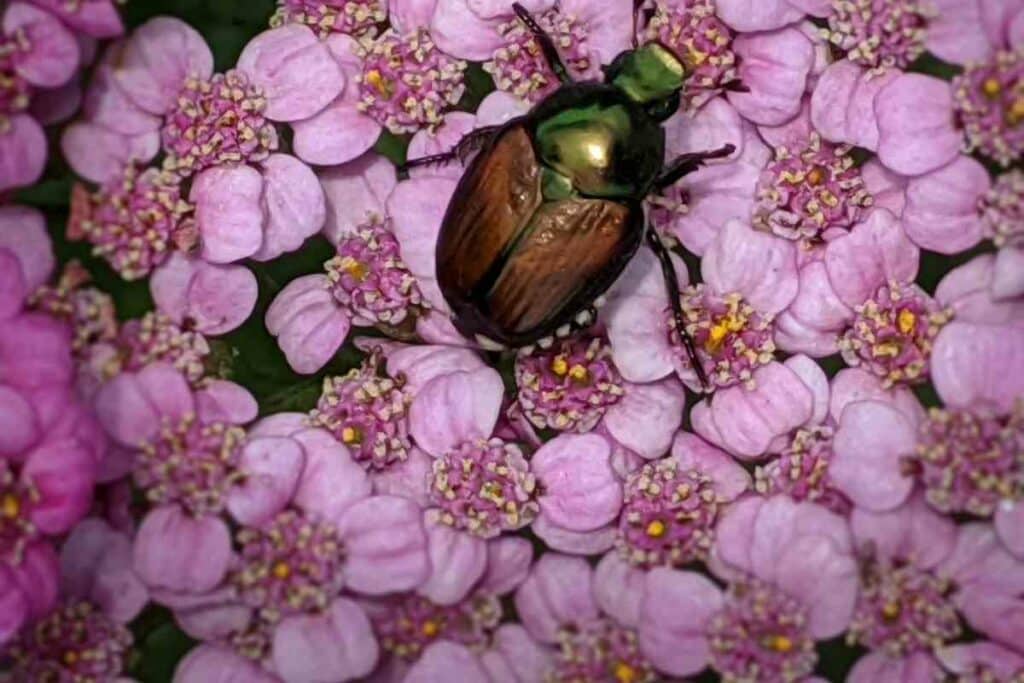
Should you be squeamish or simply not have the time for that, there are various alternatives.
A proactive set of approaches is both preferable and recommended:
- Cedar Oil – A spray made with this pungent oil can be used as an organic repellent, preventing an infestation altogether. Apply 60 millilitres per gallon of water and the smell will keep them away.
- Garlic – creating a spray solution from garlic puree, water and soap, will also prevent them from approaching plants.
- Coffee – according to some sources, sprinkling coffee grounds into the soil will deter them. You can also make a solution with water to spray plants.
- Other Scents they detest – many fragrances will repel these pests, so creating sprays with oil from Juniper berries or Teaberries; even from chives, gaultheria or wintergreen, will allegedly do the trick.
- Covers – Fly nets and row covers will also help to protect your plants from various pests, including Japanese beetles.
- Beneficials – Attract natural predators like bees and wasps, to your garden with nectar-producing plants. Although some beetles will inevitably perish, just having beneficials around will deter many and help keep numbers low.
- Plants – Certain species of plant, naturally repel these critters as well. Plants including Catnip, Marigold and Chives are but a few examples.
- Consider putting out food for the birds, these are also obvious predators.
- Attract and trap them, naturally – Plant some sacrificial geraniums: they love them, but they leave them dazed and almost paralysed so that they are more vulnerable to natural predators.
Organically Tackling Adult Beetle Infestations
Traditional treatments included solutions made with aluminium-sulphate, but times have changed quite a bit since then.
Should you be unfortunate enough to find your garden has a large infestation, you are however left with limited humane options.
Insecticidal soaps can be used to wipe down the affected plant and kill the beetles, but regular soap and water is reportedly just as effective.
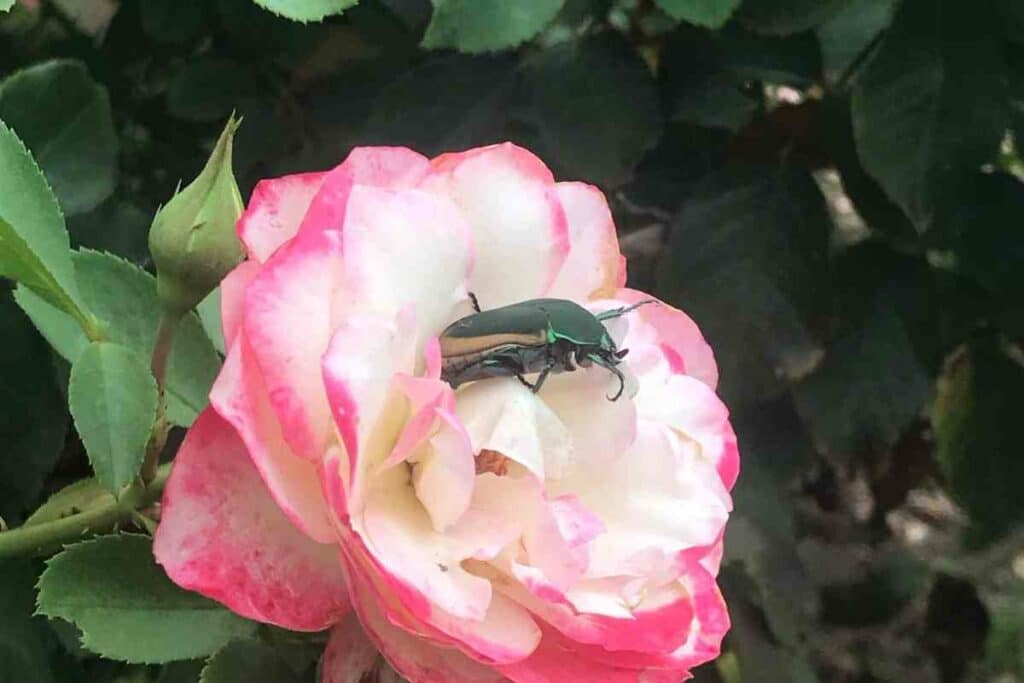
You should, however, check that anything that you do use is not going to harm your plant in any way.
As well as these, spraying the affected plant/s with an effective solution made from Neem oil, is also a recommended treatment and preventative – 30ml of oil and 15ml of regular soap per gallon of water.
This will most effectively kill the bugs when they are young but spraying weekly will keep them away, also. Diatomaceous Earth (DE) is another natural killer.
Sprinkling this onto leafage, or any other part of a plant, will surely deter them. This invasive treatment attacks their exoskeletons and dehydrates them.
A standard spray bottle, filled with water and mixed with 75ml of DE, will also make an effective treatment for both larvae and adult beetles.
Additionally, you could purchase traps which are designed to attract them. These come in varying forms and can be purchased quite easily.
A homemade trap can be constructed with an open container – like a bucket – containing a:
- concoction of water
- sugar
- vinegar
- and ripened and mashed banana
This will eventually create an alluring fragrance and they will crawl in and die.
Traps are all well and good, but you must consider that they will attract other things; they are often harmful to beneficial bugs, as well, and so they are not the best choice.
Some sources even go as far as recommending that you avoid using them at all.
Organically Tackling Subterranean Larval Infestations
Females feed on plants and then burrow down beneath, lay their eggs in and infest the soil.
Mostly found in grassy areas – in their hatched, larval state – these grubs ingest roots, so the soil itself must be treated.
The use of nematodes is a recommended method of treatment, that is considered most effective and timely.
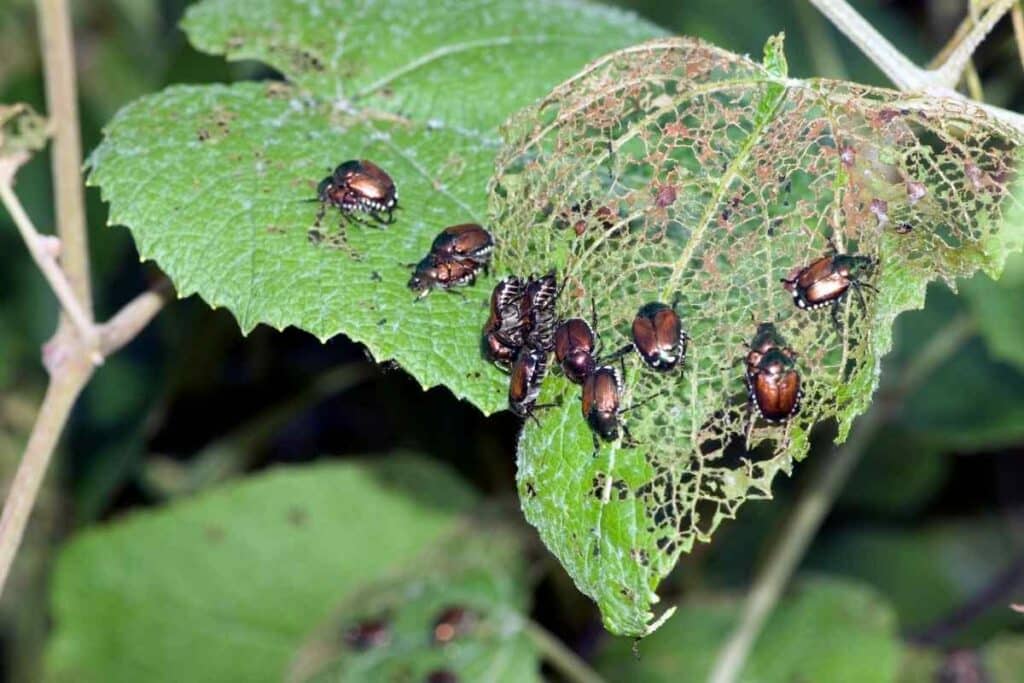
Natural, predatory microorganisms, Heterorhabditis bacteriophora, enter a grub’s bloodstream, effectively poisoning and killing them in a matter of days. Simply add them to the plant’s water when hydrating.
They instinctively pursue grubs and are apparently very effective. The optimum time to disperse these is in the late evening, as they do not enjoy direct light.
They are unharmful to crops, generally, as well as other beneficial insects, animals and humans.
Similarly: You can treat the soil with Bacillus thuringiensis, a bacterium which lives in soil and excretes poisonous toxins that paralyse them and ultimately kill them.
3 Little Known Facts
- Predictability – the times at which these beetles feed, can be predicted incredibly accurately. After they emerge as adults, they eat for around a month.
- Attraction – when plants are being consumed, they are essentially broken down and often release attractive compounds and scents which will attract even more pests.
- Northern Masked Chafers – discombobulating as it may be, you could find that your plants have irreparable beetle damage, but beetles are nowhere to be seen. This is often due to the fact that, similarly to the Japanese beetle, Northern Masked Chafers feed only at night.
Final Thoughts
As you can see this Native Beetle to Japan can be very destructive.
But there are measures and treatments to keep them under control.
Don’t underestimate this beetle and if you find it in your garden take action quickly.

